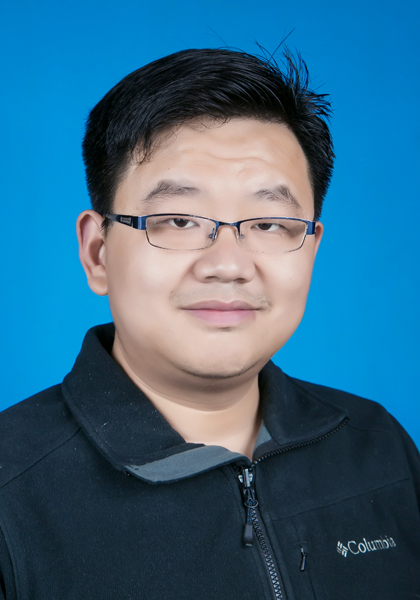
门冬研究员
教育经历
2001.09-2005.07,河南大学,生物科学,本科
2006.09-2011.07,中国科学院武汉病毒研究所,生物化学与分子生物学,博士研究生
工作经历
2011.07-2022.12,中国科学院武汉病毒研究所,助理研究员/副研究员/研究员/学科组长
2022.12至今 广州实验室 研究员
研究简介
课题组研究面向疾病诊断与健康监控的需求,开展生物技术和信息技术的交叉研究,致力于发展病原检测/生物传感新原理、新技术与新产品。重点开展:
1)生物大分子理性设计:学习和借鉴病毒、微生物细胞中天然纳米结构的自组装原理及生物学特性,结合人工智能、合成生物学与纳米科学等新兴技术手段,探索生物大分子理性设计方法与生物纳米结构自组装原理,建立人工纳米生物体系,创造人造分子机器/分子机器人,实现生物医学领域的技术转化。
2)生物传感器:根据疾病预防与控制、食品安全、环境监控等领域的需求,通过多学科交叉研究,开展半导体传感器件、合成生物探针、分子定向连接与均质化界面等技术研究,发展生物传感新原理、新技术与新产品。
人才头衔与荣誉奖励
中科院“国科大”杯创新创业大赛二等奖(2019)
中科院青促会优秀会员(2018)
中科院“率先杯”未来技术创新大赛优胜奖(2018)
湖北省自然科学优秀论文特等奖(2016)
湖北省自然科学一等奖(2015)
中科院青年创新促进会(2014)
中科院优秀博士毕业论文(2012)
湖北省自然科学优秀论文特等奖(2010)
The Elsevier Biosensors & Bioelectronics Awards (2010)
代表性成果
1. A bacteria-derived tetramerized protein ameliorates nonalcoholic steatohepatitis in mice via binding and relocating acetyl-coA carboxylase. Lin Y, Yang M, Huang L, Yang F, Fan J, Qiang Y, Chang Y, Zhou W, Yan L, Xiong J, Ping J, Chen S, Men D*, Li F*.Cell Rep. 2023 Nov 28;42(11):113453.
2. Rational design of a genome-based insulated system in Escherichia coli facilitates heterologous uricase expression for hyperuricemia treatment. He L, Tang W, Huang L, Zhou W, Huang S, Zou L, Yuan L, Men D*, Chen S*, Hu Y*. Bioeng Transl Med. 2022 Nov 21;8(2):e10449.
3. Self-Assembled Enzymatic Nanowires with a “Dry and Wet” Interface Improve the Catalytic Performance of Januvia Transaminase in Organic Solvents. Wei C, Zhou J, Liu T, Zhao W, Zhang XE*, Men D*. ACS Catalysis 12 (1), 372-382
4. Consecutive Monitoring of Interleukin-6 Is Needed for COVID-19 Patients. Chen X, Zhou J, Chen C, Hou B, Ali A, Li F, Hua Z, Wu Y, Yang Q, Chen M, Zhang R, Huang Q, Ding J, Zhang XE, Men D*. Virol Sin. 2021 Oct;36(5):1093-1096.
5. Auxiliary Module Promotes the Synthesis of Carboxysomes in E. coli to Achieve High-Efficiency CO2 Assimilation. Zhang Y, Zhou J, Zhang Y, Liu T, Lu X, Men D*, Zhang XE*. ACS Synth Biol. 2021 Apr 16;10(4):707-715.
6. SARS-CoV-2 proteome microarray for global profiling of COVID-19 specific IgG and IgM responses. Jiang HW, Li Y, Zhang HN, Wang W, Yang X, Qi H, Li H, Men D*, Zhou J*, Tao SC*. Nat Commun. 2020 Jul 14;11(1):3581.
7. Chemical nature of electrochemical activation of carbon electrodes. Li Y, Zhou J, Song J, Liang X, Zhang Z, Men D*, Wang D, Zhang XE*. Biosens Bioelectron. 2019 Nov 1;144:111534.
8. Self-Assembly of Antigen Proteins into Nanowires Greatly Enhances the Binding Affinity for High-Efficiency Target Capture. Men D*, Zhou J, Li W, Wei CH, Chen YY, Zhou K, Zheng Y, Xu K, Zhang ZP, Zhang XE*. ACS Appl Mater Interfaces. 2018 Dec 5;10(48):41019-41025.
9. Self-Assembly of Ferritin Nanoparticles into an Enzyme Nanocomposite with Tunable Size for Ultrasensitive Immunoassay. Men D, Zhang TT, Hou LW, Zhou J, Zhang ZP, Shi YY, Zhang JL, Cui ZQ, Deng JY, Wang DB, Zhang XE. ACS Nano. 2015 Nov 24;9(11):10852-60.
10. Seeding-induced self-assembling protein nanowires dramatically increase the sensitivity of immunoassays. Men D, Guo YC, Zhang ZP, Wei HP, Zhou YF, Cui ZQ, Liang XS, Li K, Leng Y, You XY, Zhang XE. Nano Lett. 2009 Jun;9(6):2246-50.